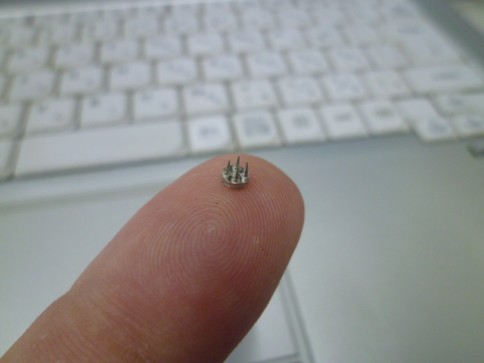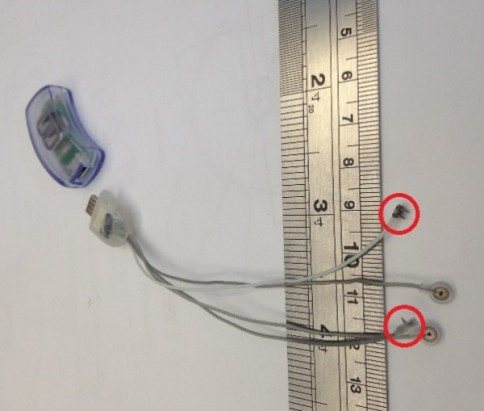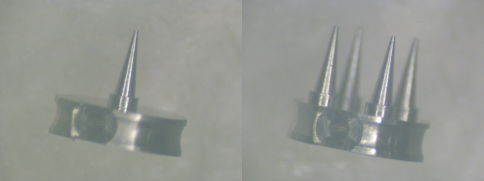



To achieve cost reductions and improve on the quality of “medical microrobots” available today.
There are various applications and shapes of microneedles. In this development project, a needle is to be secured to the scalp of a patient to promote analgesia by flowing a weak current. The tip used for this medical device was our microneedle. The device is required to not only high quality and usable by medical staff at hospitals, but also be able to be used by patients at home. Considering the pain that could result from an amateur piercing the scalp, it is essential for the needle tip to be made as fine as possible. A large share of the existing products are manufactured in Switzerland with correspondingly high processing costs and material costs.

Adopting materials suitable for medical equipment and reducing costs by utilizing mass production at our Cebu factory.
Medical devices need strict certification of the materials used and quality before they can be sold to avoid various risks in the human body. It takes time to certify to new specifications each time they change, so typically manufacturers do not like to change specifications. However, the need for cost reductions and quality improvement in this development project made change of material inevitable.

Outstanding metal processing technology and mass production technology at the Tecdia Cebu factory.
This was Tecdia’s chance to quickly obtain certification by adopting Ti-6Al-4V material (64 titanium), which is approved for medical use under ASTM standards (American Society for Testing and Materials). In addition, having a location suitable for affordable mass production, such as our factory in Cebu, The Philippines, also contributes greatly to cost reduction.

Our products passed the sample evaluation stage and tests for mass production have commenced.
We received good results in terms of cost reduction and quality improvement upon evaluation of our samples and have since began carrying out tests to optimize mass production. By quickly and flexibly communicating our customer’s requests to the factory, we made it possible to produce products with short delivery times, leading to customer satisfaction.
[Client Industries]
Medical Device Manufacturers (USA)
 +1-408-748-0100
+1-408-748-0100
Office Hours: 8:30am - 5:30pm PST
